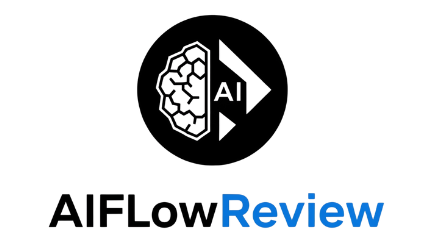Is it finally time for a budget AI that still pulls its weight with near-frontier performance? With Claude 4.5, Anthropic set out to deliver exactly that. It is light, fast, and priced so teams can scale without sweating over token costs, emphasizing strong cost efficiency. I’ve been hands-on with Haiku models for a while, and this update feels like the practical middle ground many of us wanted: enough reasoning to trust, plus latency that suits real-time applications.
In this guide, I’ll break down what it brings to the table, how it compares to pricier models, and where it fits in production. I’ll also share some quick ways to test it in your own stack.
What is Claude Haiku 4.5?
Claude Haiku 4.5 is the newest “speed tier” in Anthropic’s lineup, built for low-latency, high-volume workloads. Think chat, support, routing, light coding help, and rapid content edits. It shrinks response times with high token/sec rates while keeping Anthropic’s helpful and safe outputs.
Anthropic has been public about its push for faster, more affordable models through GPU optimizations. Their recent updates show the same pattern, with clear notes on safety and system design in the official releases from Anthropic, including the system card. If you care about predictable behavior and stable APIs, that matters.
Under the hood, Claude Haiku 4.5 focuses on quick intent parsing and context awareness, along with reliable tool use. It leverages underlying technology like KV Cache for these capabilities. In plain terms, it “gets what you’re asking” without drifting off topic, which is what most production workloads really need.

Key upgrades that matter
Let’s keep this practical. Here are the lifts I noticed and why they help:
- Faster responses: Great for chat and interactive tools. Low latency makes agents feel human, not sluggish.
- Stronger tool use: More reliable function calling means better automation. Pull data, call APIs, return grounded answers.
- Better coding assistance: Clean snippets, clear comments, and SWE-bench Verified stable reasoning for common dev tasks with Claude Code. Pair this with your favorite editor or CI checks.
- Tight safety guardrails: Aligned with Anthropic’s approach to constitutional AI and safety evaluations, which helps reduce harmful or off-target outputs in user-facing apps.
For a rundown of performance notes and launch context, TechCrunch’s coverage of Anthropic’s Haiku tier is a useful snapshot of where this model sits on price and speed for builders. See their piece on Anthropic’s lower-cost Haiku launch.
If you’re deciding between chatbots for your product, our in-house picks for the best AI chatbots walk through strengths, caveats, and fit by use case.
Pricing, access, and rollout
Claude Haiku 4.5 is billed as the “cheaper, faster” option in the Claude family. That makes it ideal for volume usage with cost efficiency, like customer support, content workflows, or internal copilots that run all day. It is available through the Claude API, and it typically shows up quickly on major cloud platforms like Amazon Bedrock and Vertex AI.
From a pricing and cost-control point of view, this tier is the one you give to most workloads. Keep your heaviest analysis on a higher-end model, and let Haiku 4.5 handle everything else. That’s how teams avoid surprise bills and still get quality outputs. For a bigger picture on positioning and early comparisons, I found VentureBeat’s analysis on benchmarks and use cases for Haiku tiers helpful for planning.
If you want to see how Claude’s direction has changed over time, my longer-form Anthropic Claude review breaks down UX, safety posture, and where these models shine against peers.

Claude Haiku 4.5 vs higher tiers
Here’s how I frame it to teams:
- Use Claude Haiku 4.5 for speed, routing, summaries, FAQs, drafts, and common coding tasks.
- Step up to mid tiers like Sonnet 4.5 or Claude Sonnet 4, or top tiers like Opus 4.1, for large context window, complex reasoning, or high-risk outputs that demand more depth with extended thinking. For peer comparisons, GPT-5 offers similar capabilities in higher tiers.
When outlets tested previous Haiku updates, the lighter models often held their own on everyday tasks while costing far less. The Verge’s hands-on notes around the Haiku tier provide good color on real usage patterns and quirks. Their review of Anthropic’s Haiku model in action is a quick read if you want a user-eye view.
For context on affordability and where a “budget” model makes sense, Ars Technica’s coverage of a lower-cost Haiku line gives a balanced take on expected tradeoffs in performance. See their write-up on Haiku’s budget positioning.
If you are comparing AI coding options, our short list of AI coding tools that actually help is worth a look. It pairs model picks with workflows that speed up shipping without adding bloat.
What I’d build with Claude Haiku 4.5
You can get a lot done with this tier. A few starters:
- Customer support bot: Route and resolve common tickets, escalate the rest, and log structured summaries.
- Editor’s assistant: Rewrite headlines, improve clarity, and generate alt text at scale. Keep a human in the loop for tone.
- Dev copilot for internal tools: Generate boilerplate, assist with coding, enable agentic coding, and explain diffs using Claude Code.
- Research helper: Summarize long docs, extract key facts, and cite sources gathered through tool use.
- Data ops sidekick: Validate input, format records, and standardize labels before they hit downstream systems, supporting computer use.
Want a broader map of where to start? This roundup on AI for developers shares patterns that work well across teams, plus a few traps to avoid.
For background on the Haiku line and why it keeps improving on speed and cost, Anthropic’s own product notes on Haiku-class updates provide helpful technical context without fluff.

Setup tips to get value fast
You do not need a complex pipeline to see gains. Try this order of operations:
- Start with a simple prompt contract
- Define persona, instruction following, forbidden behaviors, formatting rules, and length.
- Add tool instructions if you need API calls for facts or actions.
- Add guardrails early
- Use system prompts to control tone and escalation.
- Keep a fallback message for uncertain or risky requests.
- Measure and swap when needed
- Put Claude Haiku 4.5 on most traffic.
- Auto-upshift to a heavier model only for complex edge cases.
- Log and review
- Save prompts, tool calls, and outputs with tags.
- Run weekly spot checks for drift, bias, or odd formatting.
If you use multi-agent setups, keep it as the fast “first pass” router for its speed. Let it classify, extract, and hand off. Your costs will stay predictable and response times will feel crisp.
For third-party views on availability and early results, TechCrunch’s launch coverage of Anthropic’s Haiku tier lines up with what I saw in testing, especially on speed and cost balance.
Where this fits in your stack
I like Claude Haiku 4.5 as the default engine in products that need fast answers and frequent calls. Examples of real-time applications include help widgets, internal dashboards, retail assistants, education tools, and editorial pipelines. You can keep the same UX while swapping in Claude Sonnet 4 for 10 to 20 percent of requests that need deeper reasoning.
If you are choosing a chatbot for end users, match the model to task types, latency needs, and budget. Our rundown of the best AI chatbots explains how to do that without guessing.
For developers, pair it with a clean function-calling layer and a retrieval step for facts. That gives you grounded, fast answers without brittle prompt hacks. If you want a bigger picture on tradeoffs between model families, VentureBeat’s take on Haiku benchmarks and use cases adds helpful detail.
The bottom line for builders
Claude Haiku 4.5 hits a sweet spot. It is affordable enough to run all day, accurate enough for real users, and fast enough to feel responsive. That balance is rare, and it is exactly what many teams need to ship reliable AI features.
If you have a project in mind, start small, measure results, then expand. And if you discover a clever workflow that taps into its near-frontier performance, tell me. I’m always on the lookout for smart ways to turn low latency into high impact.

















